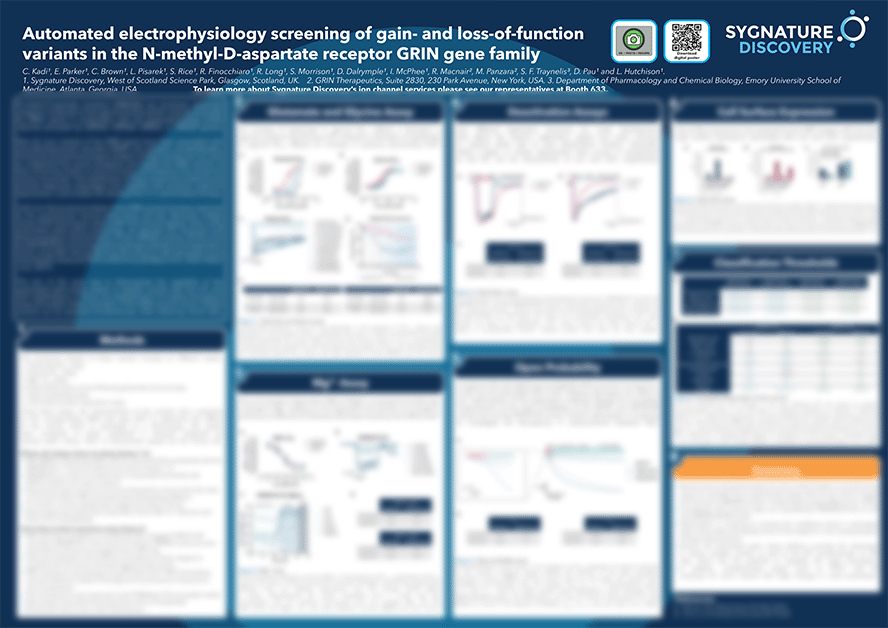Functional characterization of GRIN2B variants using automated patch clamp technology
N-methyl-D-aspartate receptors (NMDARs) are ionotropic glutamate receptors composed of two Glycine-binding NR1 subunits (encoded by GRIN1 gene) in combination with two Glutamate-binding NR2 subunits (encoded by GRIN2A, GRIN2B, GRIN2C or GRIN2D genes). Rare de novo variants of the GRIN genes have been associated with neurodevelopmental disorders (NDD) and epileptic encephalopathy resulting in seizures, behavioural symptoms and movement disorders. Current investigations are focusing on functional and pharmacological analyses to understand the properties of these variants and potentially lead to a more rapid classification of GRIN variants as gain-of-function (GoF) or loss-of-function (LoF). The classification of these variants from patients may provide diagnostic advantages and together with precision medicine could enable the development of a personalised therapy.
The functional analysis of these variants includes at least six different assays which aim to investigate the receptor’s sensitivity to the agonists Glutamate and Glycine, extracellular Mg2+ inhibition, alterations in response time-course (e.g. kinetics), channel open probability and trafficking to the plasma membrane. The results of these assays are required to determine the variant classification (Myers et al., 2023).
Until now, the functional analysis of the GRIN variants has been restricted to the conventional manual patch-clamp and two electrode voltage techniques. Although this approach has successfully been used to classify variants, the low throughput slows the rapid screening that may be required for target-directed pharmacological treatments. Here, using automated patch-clamp technology, we describe the functional and pharmacological characterization of human embryonic kidney (HEK) cells transfected with GRIN1A (wild-type) or GRIN1-A652C in combination with the GoF variant GRIN2B-S810R or LoF variant GRIN2B-E413G.
The aim of this work is to demonstrate the capability of the automated patch-clamp system to characterise variants as LoF or GoF. In the future, the establishment of a higher throughput assay will enable a faster evaluation of the GRIN variants, where multiple variants can be assessed simultaneously, while obtaining robust data. Furthermore, it is expected that this time efficient approach can be applied more generally in a wide range of ion channels for the functional classification of other missense variants related to neurological disorders.

